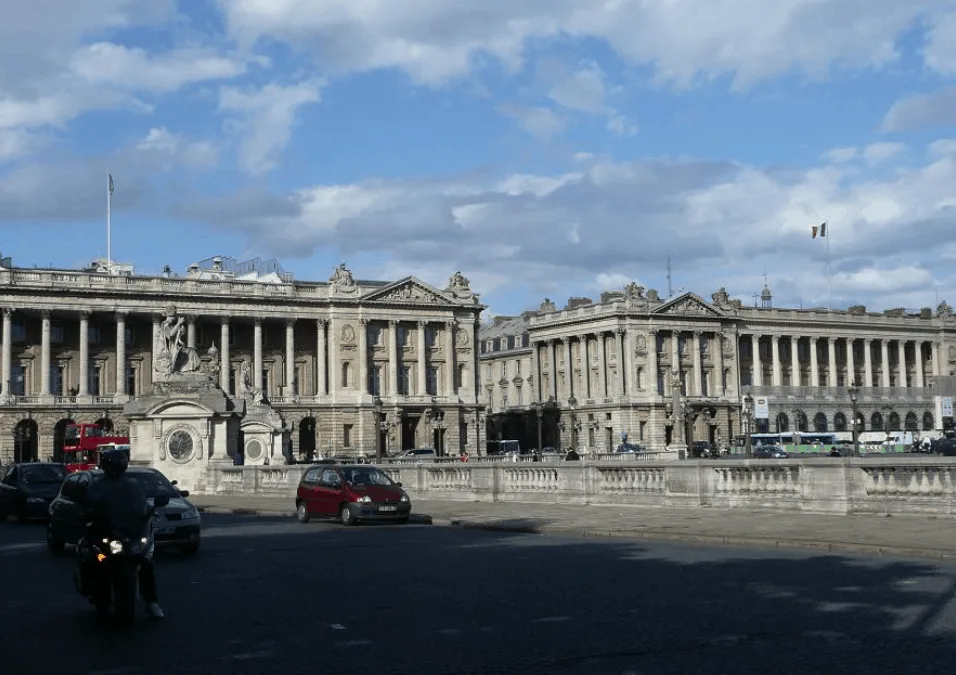This is arguably one of the most infamous squares in the world due to its rather gruesome history.
In this post, you’ll discover the ultimate list of Place de la Concorde facts, one of the most famous places in Paris.
1. It’s located in the heart of the historical center of Paris
The Place de la Concorde is located right in the heart of the so-called “Axe Historique” of Paris. It’s squeezed in between the Champs-Elysées to the west and the Tuileries Garden to the east.
It’s located on the eastern end of the most famous avenue in Paris, on the opposite end of the Place Charles de Gaulle where we can find the Arc de Triomphe, one of the most famous arches in the world.

2. It takes the shape of an octagon
The square was designed in such a way that it takes the form of an octagon, meaning it has 8 sides. On the southern end, the “Pont de la Concorde” spans the Seine River.
Just west of this bridge we can find one of the most iconic bridges in Paris, the Pont Alexandre III, a wonderfully ornamented 19th-century bridge named after the Russian Tsar.

3. The Place de la Concorde is huge
When arriving at the square, the first thing you’ll notice is that it’s actually huge. It has a length of 359 meters (1,178 feet) and a width of 212 meters (696 feet).
One of the most amazing Place de la Concorde facts is that this huge open area is the equivalent of about 3 large football fields!
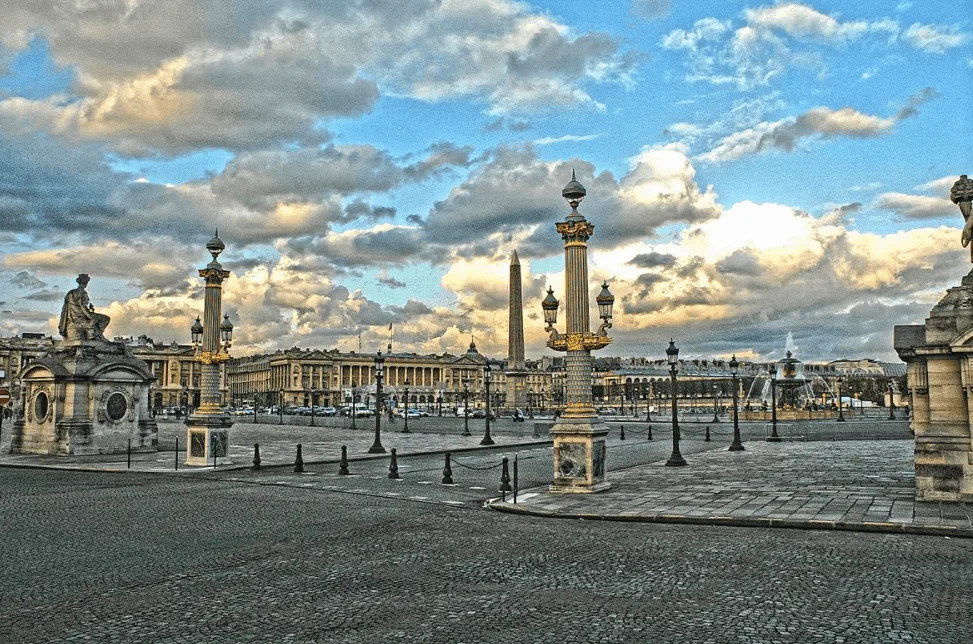
4. The square was originally known as “Place Louis XV”
The square was commissioned by the King of France at the time, King Louis XV, in the year 1755. Therefore, it was referred to as the “Place Louis XV” initially in honor of the king.

This was still the time that the French Monarchy was in control, but that was about to change at the end of the century.

5. It was constructed between 1755 and 1772
The square, its decorations, and various buildings surrounding it were constructed over a period of 17 years between 1755 and 1772.
The architect of the project was Ange-Jacques Gabriel (1698-1782), the main architect of King Louis XV of France. His style was a mix between French Baroque architecture and French Neoclassicism.
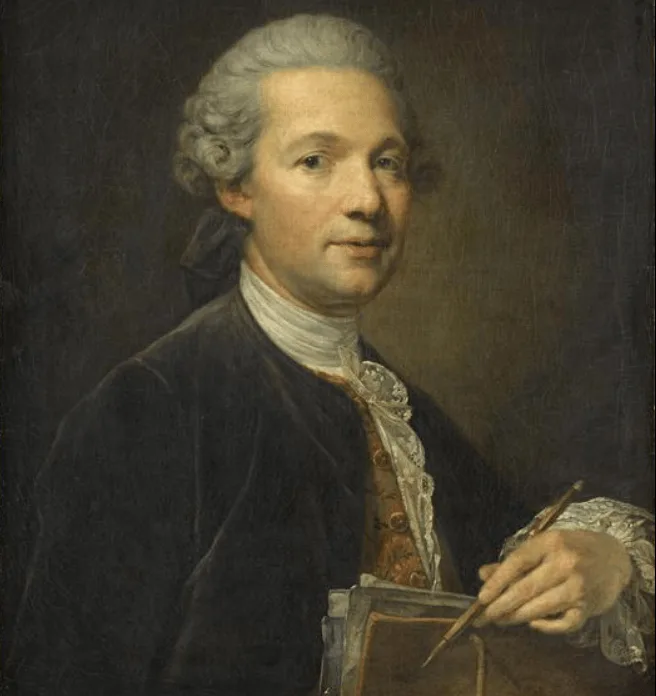
6. Two identical buildings on the square are prime examples of the Louis XV Style
The most prominent buildings on the square are two identical buildings located on the north end. They are separated by the “Rue Royale.” The eastern building used to serve as the French Naval Ministry and now serves as the “Hôtel de la Marine.”
The western building was a private residence initially and bought by the Comte de Crillon who lived there until 1907. That’s the reason why it’s now called the “Hôtel de Crillon.”
One of the most interesting Place de la Concorde facts is that these buildings are a prime example of the highly decorative and exuberant “Style Louis XV,” a popular architectural style during the reign of King Louis XV.
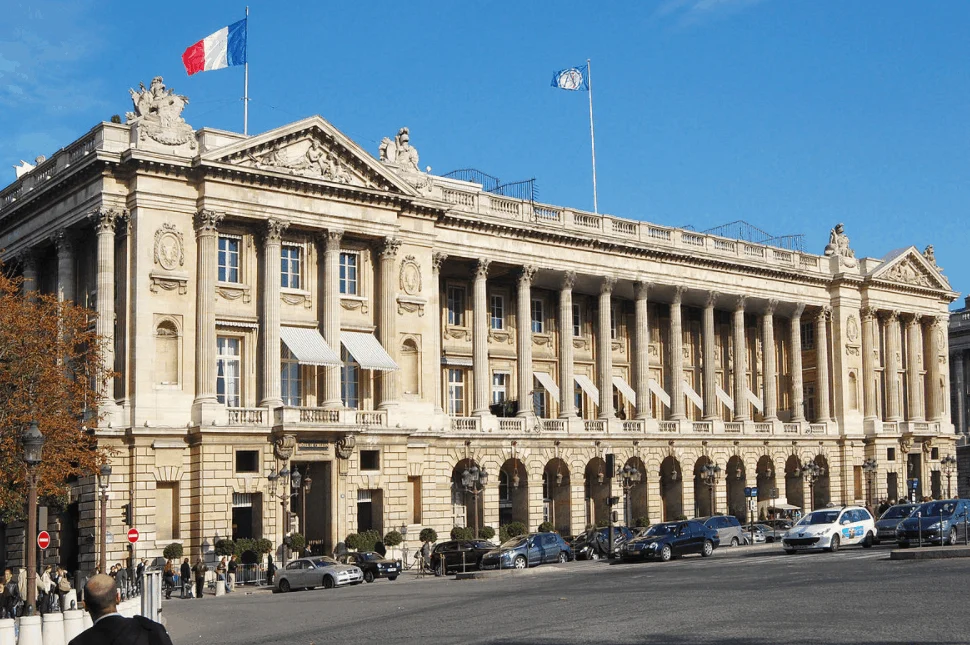
7. A large equestrian statue of the king decorated the square
Since he commissioned the construction of a square in his name, it’s logical King Louis XV wanted to include a statue that honored him, so he did. A large equestrian statue of the king decorated the square initially.
This statue was commissioned in 1748 and only completed in 1762 with two famous French sculptors working on it, Edmé Bouchardon and Jean-Baptiste Pigalle.
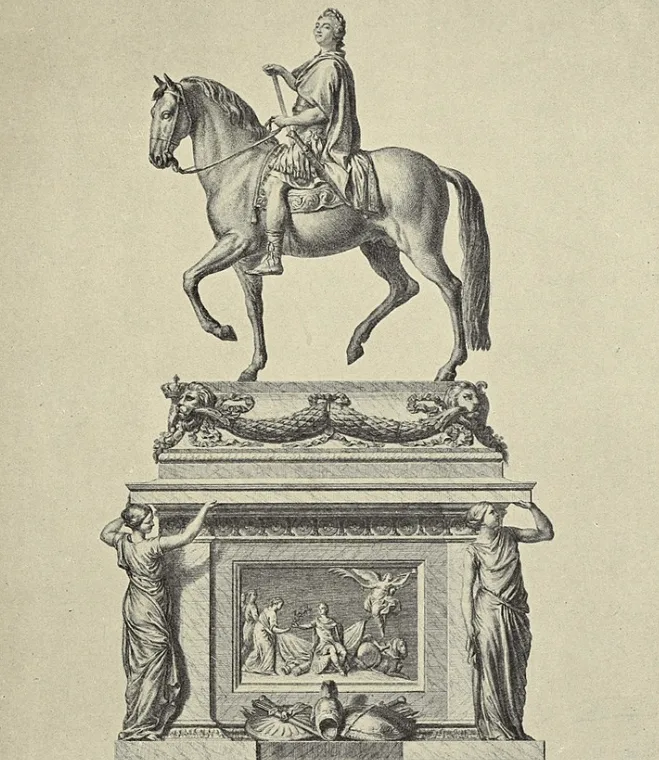
8. The square was renamed “Place de la Révolution” in 1789
The statue of the king had decorated the square for 27 years when the people had enough of the extravagance of the French Monarchy. The French Revolution started in the year 1789 and one of the first things they did was bring down the former king’s statue in the square bearing his name.
Another thing they did was rename the square from “Place Louis XV” to “Place de la Révolution.”
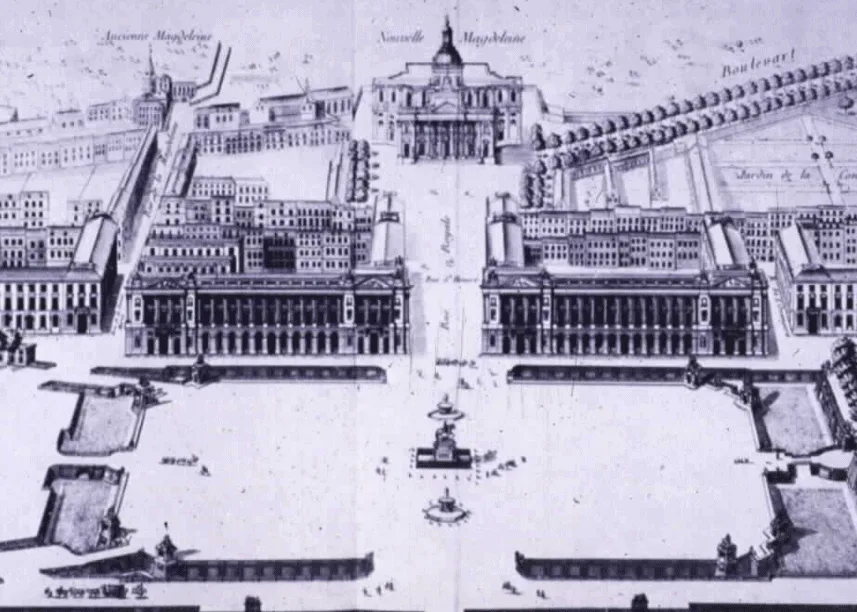
9. It was the scene of numerous bloody executions in the late 18th century
A few years after the statue of the king was torn down, something else was used to decorate the square, the guillotine!
During the Terror, a bloody period that lasted 3 years, over 1,200 people were executed on the Place de la Concorde, right near the pedestal where the king’s statue was located.
These included King Louis XVI, the brother of King Louis X who was executed here on January 21, 1793, and his wife Marie Antoinette, along with dozens of members of the royal family.
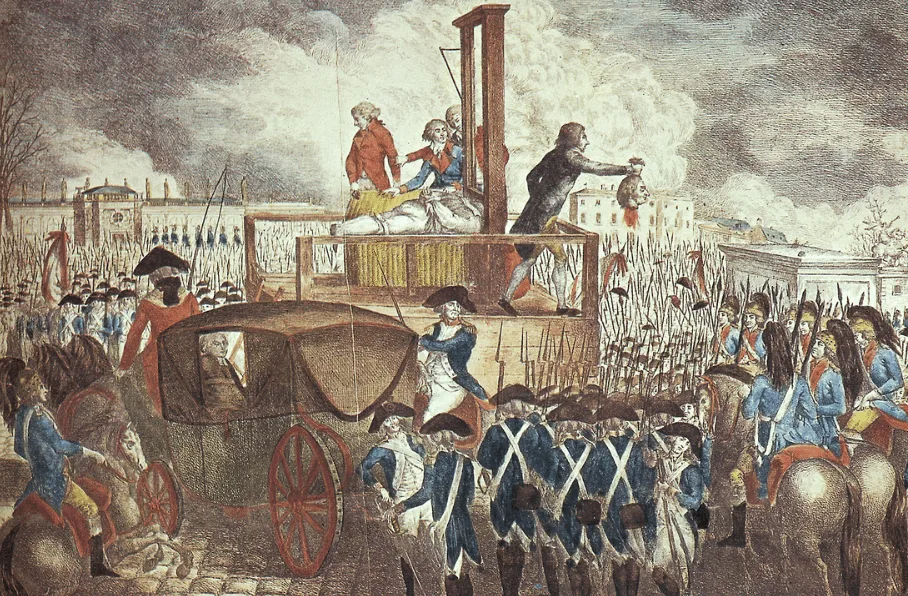
10. The square was renamed multiple times the following decades
When it appeared that the Revolution wasn’t about to succeed and the Directory was formed, the square was renamed to its current name, the “Place de la Concorde.”
The square was renamed twice after the Bourbon Restoration in 1814, first to its original name, “Place Louis XV,” and in 1826 as well, in honor of his executed brother, when it was called the “Place Louis XVI.”
After the July Revolution of 1830, it was finally decided to rename it back to “Place de la Concorde,” a name it still bears today.
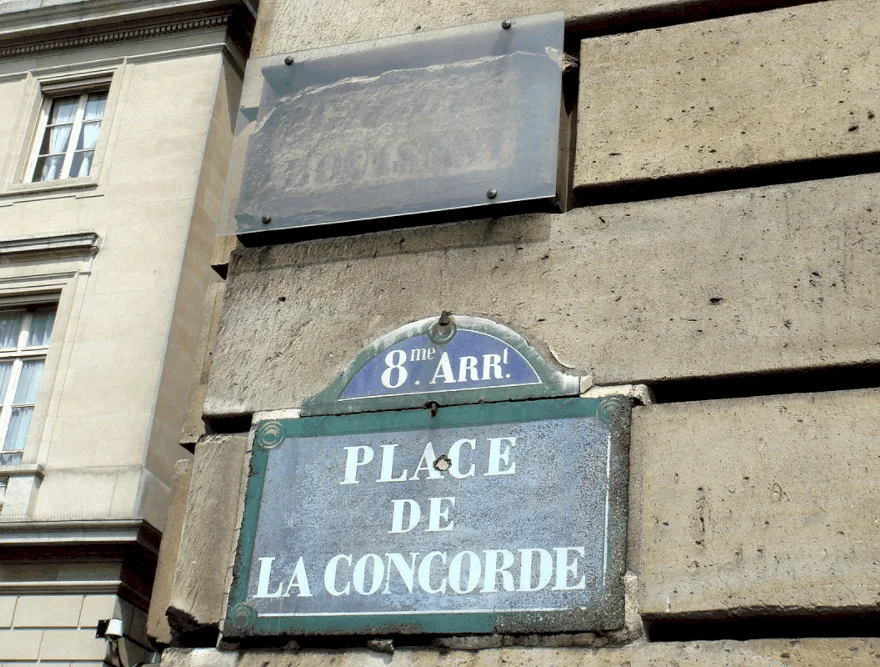
11. Statues representing 8 French cities were placed on each corner
Since the square has the shape of an octagon, it means it has 8 corners. That’s enough to put 8 statues representing a French city in each corner, which is what they did in the 19th century.
The represented cities are:
- Brest and Rouen by Jean-Pierre Cortot
- Lyon and Marseille by Pierre Petitot
- Bordeaux and Nantes by Louis-Denis Caillouette
- Lille and Strasbourg by James Pradier
The infamous execution during the French Revolution took place near the statue representing the city of Brest, just near the entrance of the Tuileries garden.
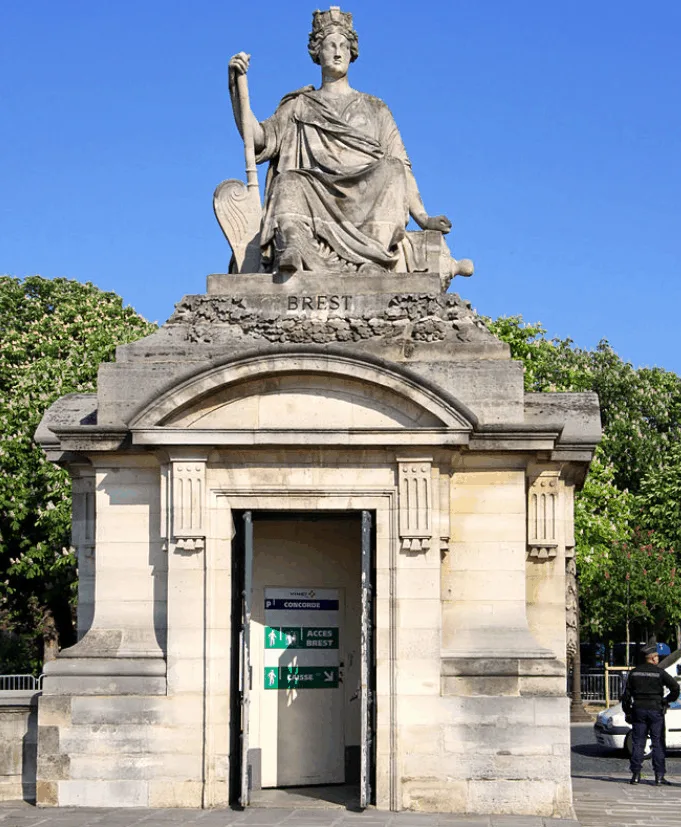
12. The obelisk in the center of the square is over 3,300 years old
Right in the middle of the square, we can see the iconic obelisk which was donated to France by the Egyptian government in the 19th century. It dates back to the reign of Ramesses II which means it’s over 3,300 years old!
This obelisk was used to decorate the entrance of the Temple of Luxor in the city of Luxor, one of the most famous temples in Egypt today.
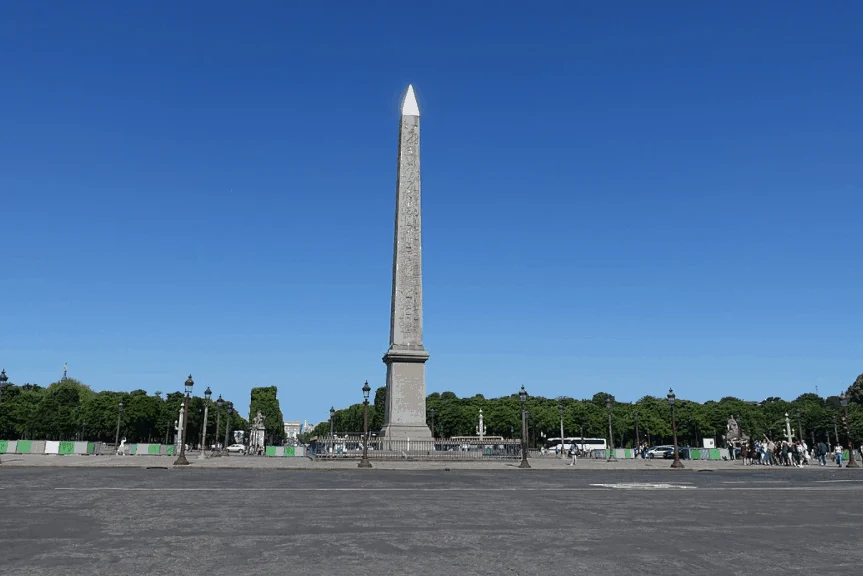
13. Egypt originally gave 2 obelisks to the French
The entrance of the Temple in Luxor was decorated with 2 obelisks, which means one still stands near the entrance right now. The Egyptian government actually donated both of them to France.
The reason they didn’t pick it up is that this massive granite monument stands 23 meters (75 feet) tall and weighs a whopping 250 tonnes. Since the remaining one in Luxor is even bigger, they had some trouble relocating it and only brought one in 1833.
On September 26, 1981, French President Mitterrand returned the gift (the obelisk still located in Luxor) to Egypt. In 1998, they added a gold Pyramidion on top of the obelisk in France as the original was stolen many centuries ago.
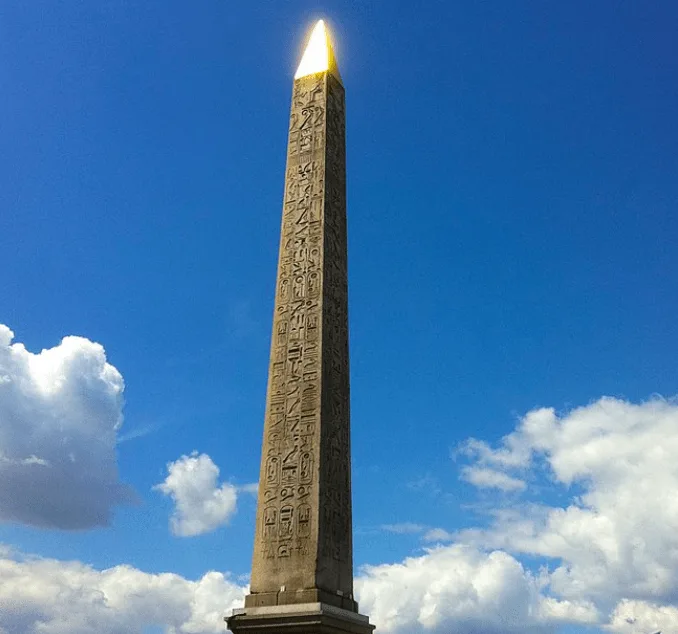
14. Two 19th century fountains decorate the square
The final decorations on the square are 2 monumental fountains that are perfectly aligned with the obelisk on the square. This alignment was inspired by the Piazza Navona in Rome which also features an obelisk and fountains.
The themes of the fountains are rivers and seas, with the northern fountain representing the Rhone and the Rhine, and the southern fountain representing the Mediterranean Sea and the Atlantic Ocean.
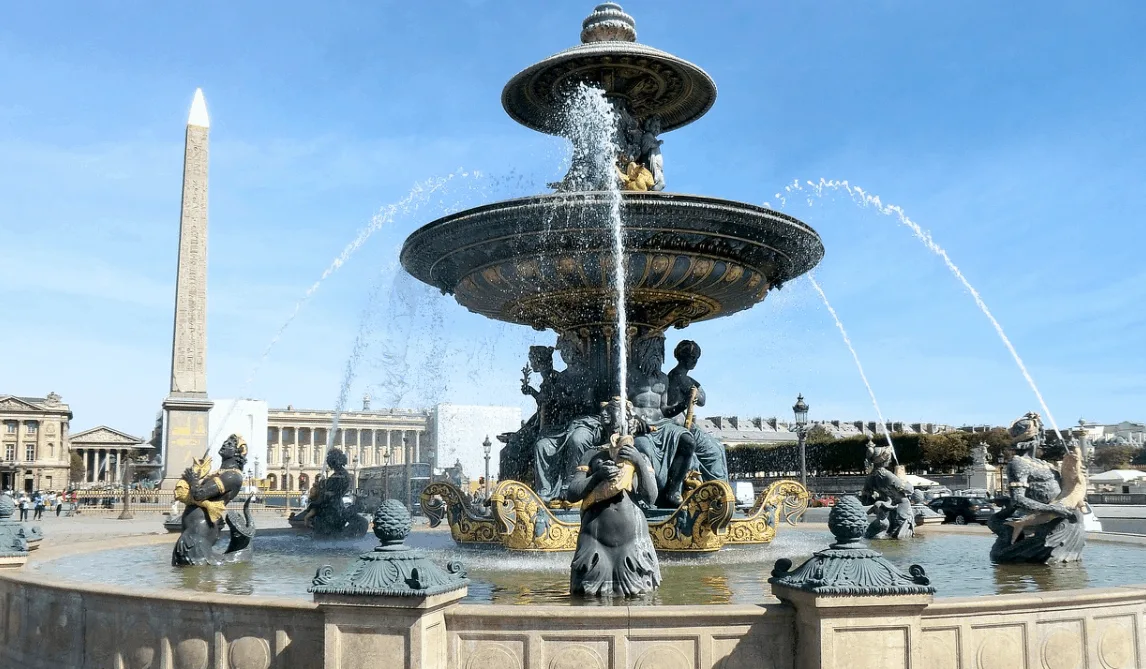
15. A replica of the square and buildings can be found in Philadelphia
One of the most remarkable Place de la Concorde facts is that it served as inspiration for a famous square in the United States as well!
A square named “Logan Circle,” also referred to as “Logan Square,” in Philadelphia, Pennsylvania, is pretty much a replica of the square in Paris. This includes the two fascinating buildings on the northern end of the square, the Hôtel de Crillon and the Hôtel de la Marine!
